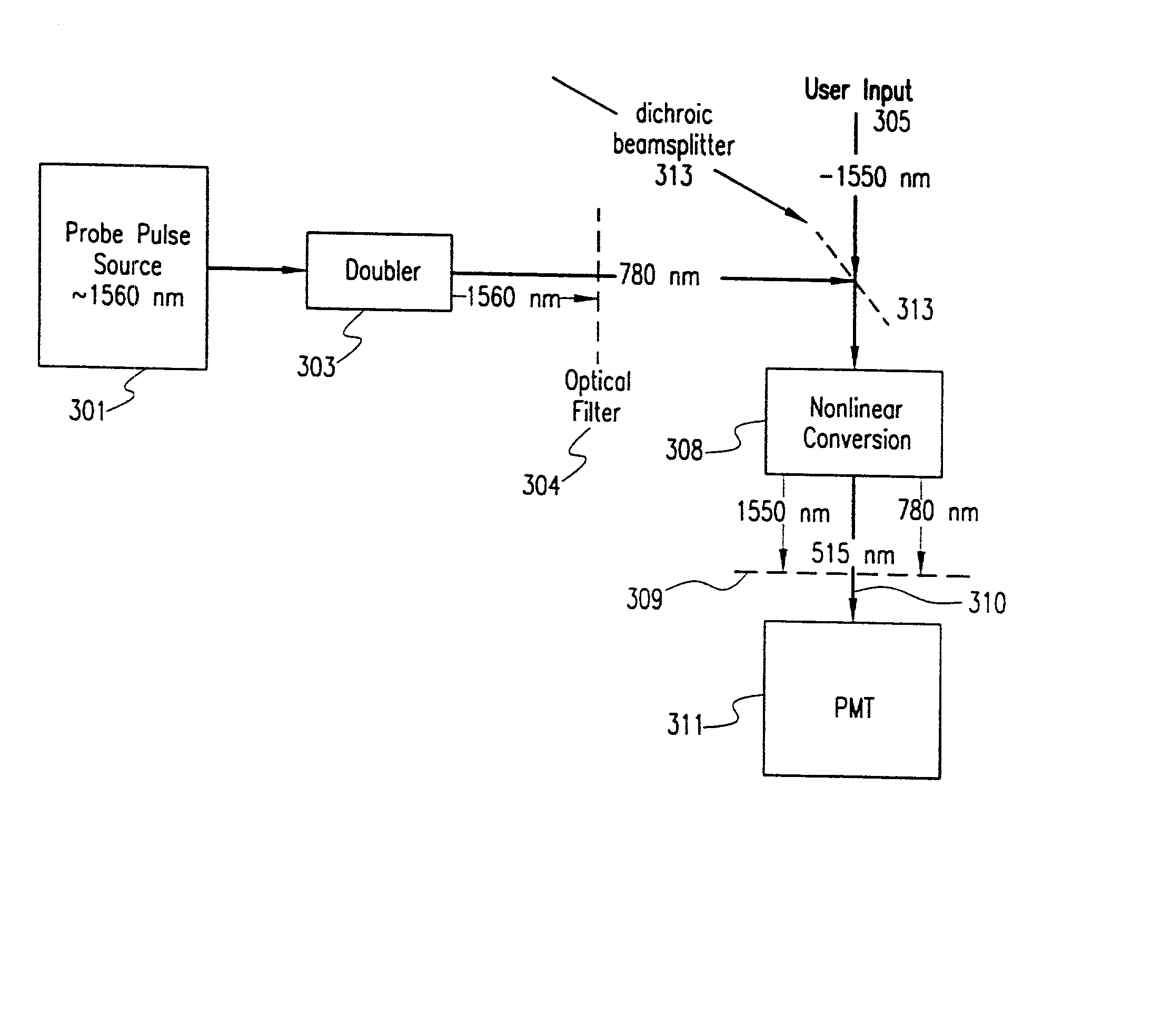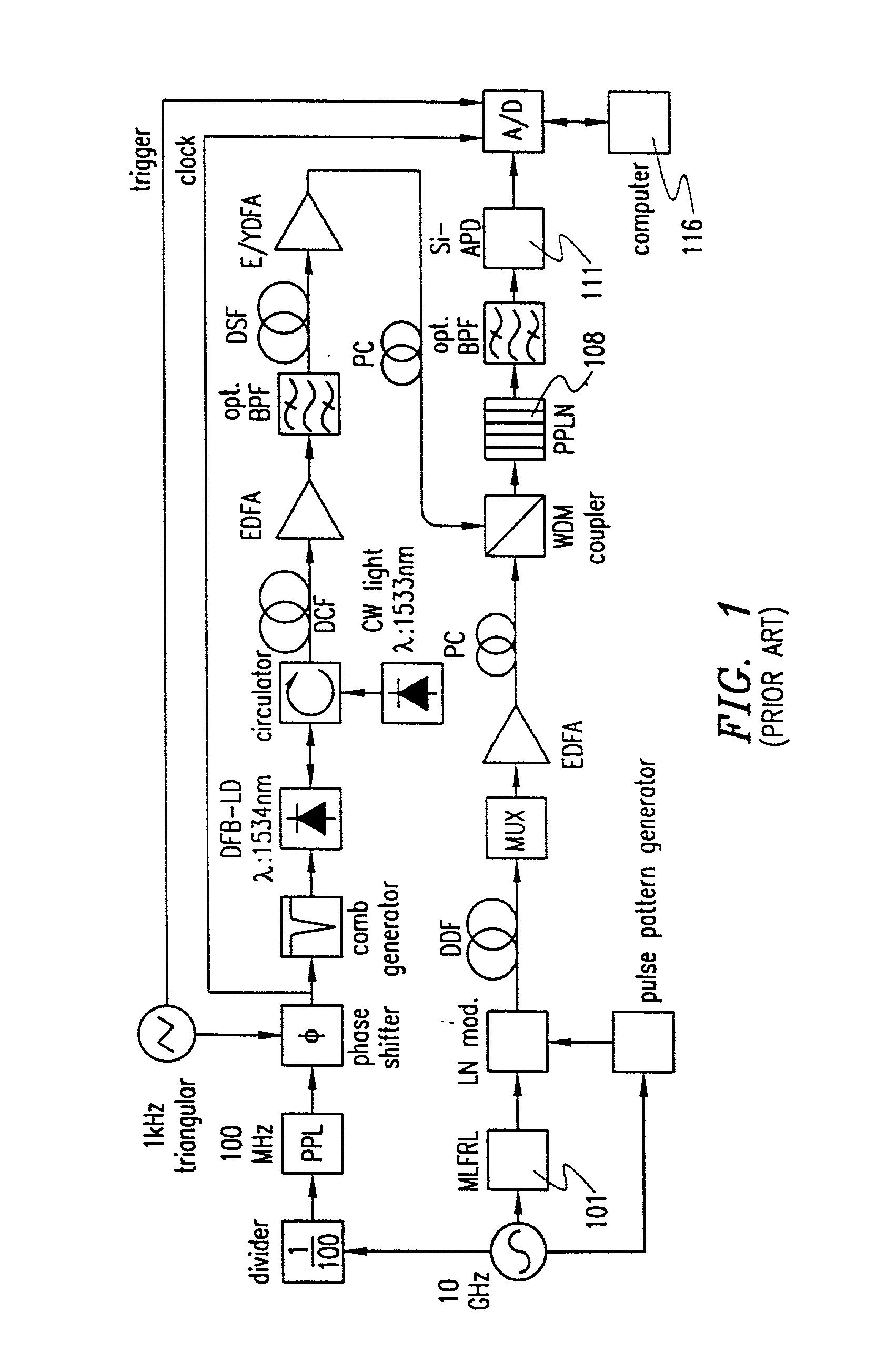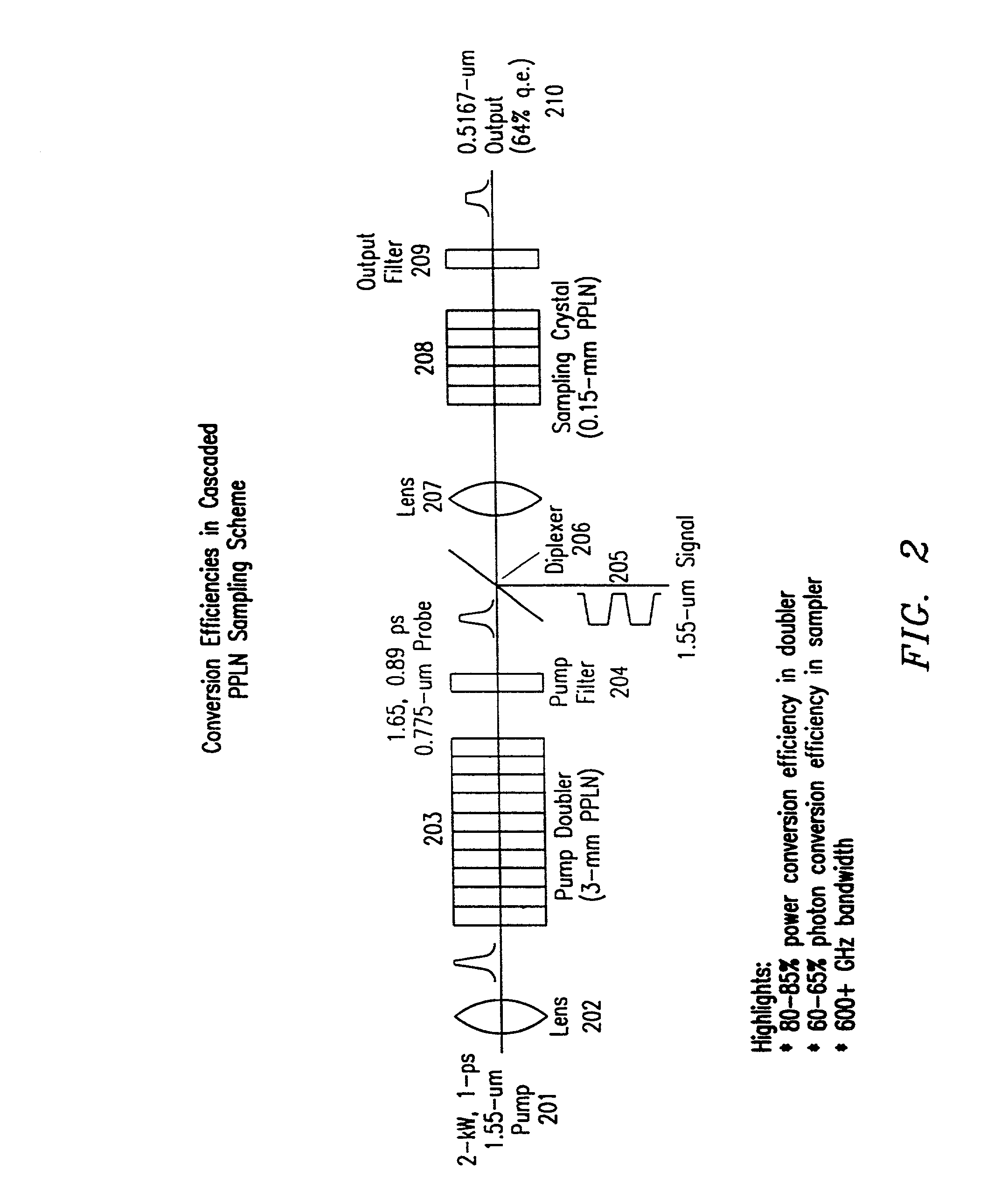Optical sampling using intermediate second harmonic frequency generation
a second harmonic and frequency generation technology, applied in the field of optical sampling using intermediate second harmonic frequency generation, can solve the problems of unsatisfactory high background noise, and increased need
- Summary
- Abstract
- Description
- Claims
- Application Information
AI Technical Summary
Benefits of technology
Problems solved by technology
Method used
Image
Examples
Embodiment Construction
[0033] FIG. 1 shows a prior art experimental setup for producing SFG by using a 1.4 mm thick PPLN crystal as the SFG material instead of a KTP crystal or a conventional 10 mm thick PPLN crystal. A mode-locked fiber ring-laser (MLFRL) generates optical signal pulses at 10 GHz repetition rate. The optical signal pulses are modulated by a LiNbO.sub.3 modulator (LN mod.) to a 10 Gbit / s optical signal, and its pulsewidth is compressed from 4.9 to 1.3 ps in a dispersion-decreasing fiber (DDF). The modulated and compressed optical signal is time-division-multiplexed to a 160 Gbit / s optical signal by using an optical multiplexer (MUX) consisting of four split-relatively-delay-and-recombine fiber doublers.
[0034] The optical sampling pulses are generated by a gain-switched distributed-feedback laser diode (DFB-LD) with a repetition rate of 100 MHz. The timing jitter of the gain-switched optical pulses is reduced to 160 fs by using a continuous wave (CW) light-seeding method. These pulses are ...
PUM
| Property | Measurement | Unit |
|---|---|---|
| wavelength range | aaaaa | aaaaa |
| wavelength range | aaaaa | aaaaa |
| length | aaaaa | aaaaa |
Abstract
Description
Claims
Application Information
 Login to View More
Login to View More - R&D
- Intellectual Property
- Life Sciences
- Materials
- Tech Scout
- Unparalleled Data Quality
- Higher Quality Content
- 60% Fewer Hallucinations
Browse by: Latest US Patents, China's latest patents, Technical Efficacy Thesaurus, Application Domain, Technology Topic, Popular Technical Reports.
© 2025 PatSnap. All rights reserved.Legal|Privacy policy|Modern Slavery Act Transparency Statement|Sitemap|About US| Contact US: help@patsnap.com



